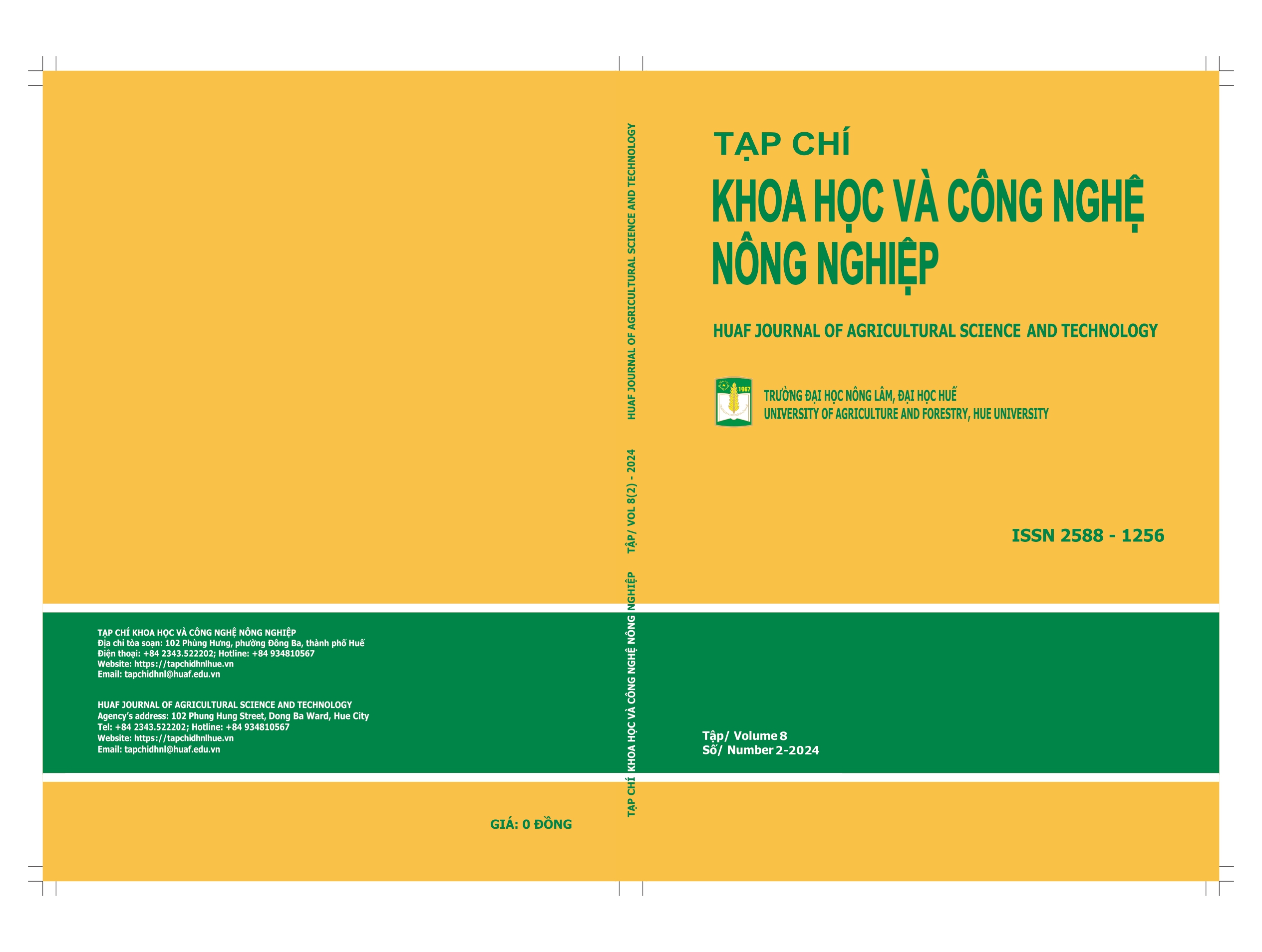##plugins.themes.huaf_theme.article.main##
Tóm tắt
Ảnh hưởng của nguyên liệu và chế độ xử lý nhiệt (chần, hấp, sấy) trong quy trình công nghệ sản xuất bột matcha chè xanh đã được thực hiện trong nghiên cứu này. Nguyên liệu lá chè Truồi tại xã Lộc An, huyện Phú Lộc, tỉnh Thừa Thiên Huế được thu nhận tại các vườn chè Truồi truyền thống có độ che bóng tự nhiên bởi các cây bản địa đã được khảo sát các chỉ tiêu chất lượng bao gồm: độ ẩm, tanin, polyphenol, chất tan, chlorophyll, độ Hue và cảm quan cũng như sự thay đổi các chỉ tiêu chất lượng này với các chế độ xử lý nhiệt khác nhau. Kết quả cho thấy rằng, nguyên liệu ở vườn chè bị che bóng tự nhiên là phù hợp để sản xuất matcha vì hàm lượng tanin thấp hơn là 17,22% chất khô (ck), hàm lượng chlorophyl tổng và màu sắc lần lượt là 3,37 mg/g ck và 120,00°Hue, cao hơn so với vườn không bị che bóng. Phương pháp xử lý nhiệt phù hợp được lựa chọn để diệt men là hấp ở 100℃ trong 2 phút, sau đó sấy đối lưu bằng không khí nóng ở nhiệt độ sấy là 50℃ trong 180 phút. Bột matcha thành phẩm có độ ẩm là 4,38%, chất tan là 42,92% ck, cholorophyll là 2,83 mg/g ck, polyphenol là 12,76% ck. Sản phẩm cũng đạt yêu cầu về vi sinh theo tiêu chuẩn Việt Nam.


